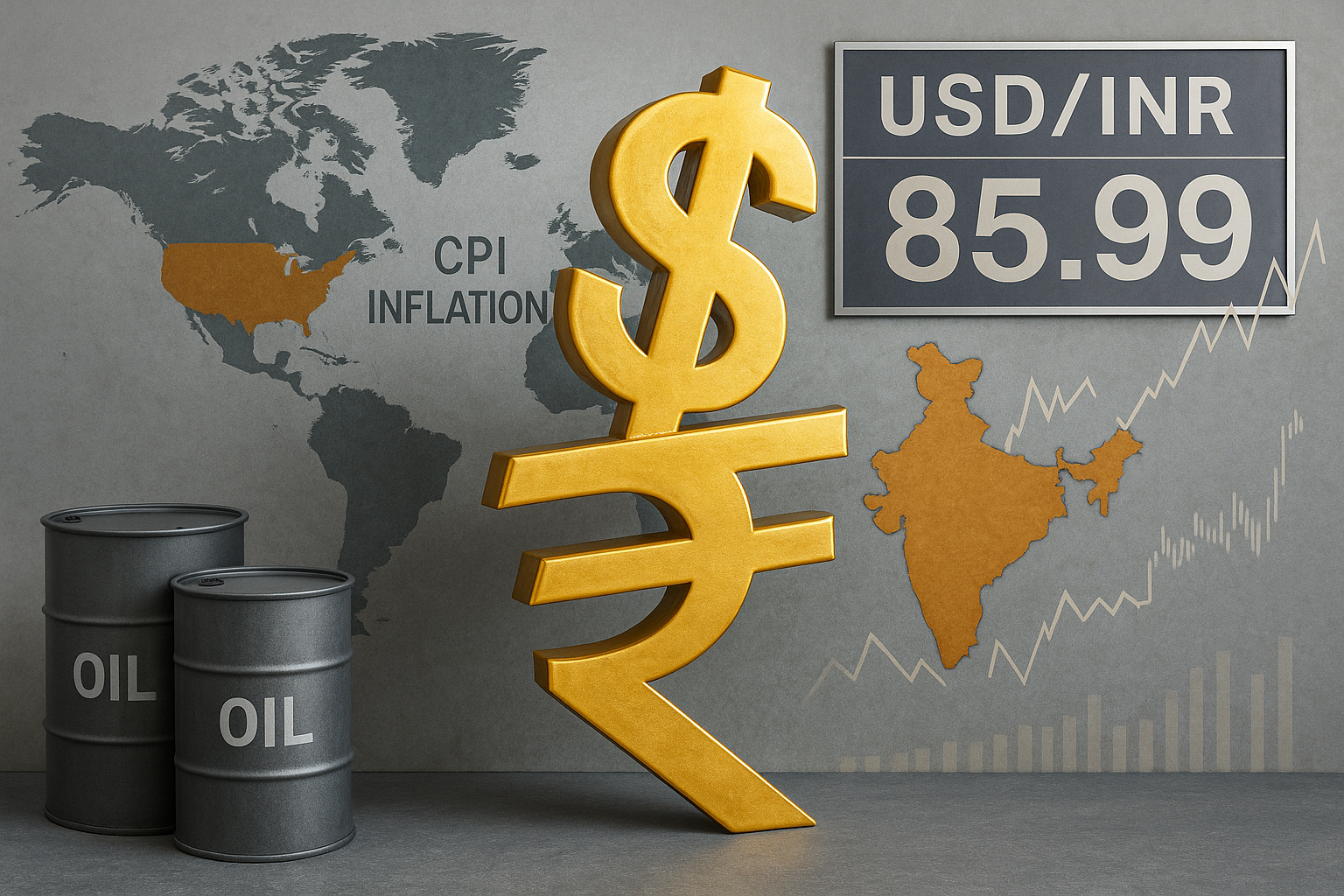The Indian rupee began Tuesday’s trading session on a weaker note, slipping 18 paise to open at 85.99 against the U.S. dollar. The decline follows renewed strength in the greenback as U.S. inflation data came in hotter than expected, dashing hopes of an early interest rate cut by the Federal Reserve.
This marks one of the lowest opening levels for the rupee in recent months, reigniting concerns over import cost pressures, capital flows, and global macro volatility.
What Triggered the Slide?
The fall in the rupee is largely driven by global cues, primarily the U.S. Consumer Price Index (CPI) data released on Monday. The data showed:
June CPI rose 3.3% YoY, marginally higher than expected
Core inflation remains sticky, prompting hawkish commentary from Fed officials
In response, the U.S. Dollar Index surged, pushing other emerging market currencies—including the Indian rupee—lower.
“Markets are re-pricing the Fed’s rate cut trajectory. A September cut now looks less likely, and that’s weighing on the rupee,” said a Mumbai-based forex strategist.
Domestic Factors in Play
Though global factors dominate the immediate weakness, there are some India-specific pressures as well:
Rising crude oil prices, with Brent inching above $85/barrel
Month-end importer demand for USD
Profit booking by foreign institutional investors (FIIs) in Indian equities
That said, robust forex reserves (over $650 billion) and RBI’s active intervention are expected to cap excessive volatility.
Expert Commentary
CA Manish Mishra, macro strategist:
“This is not a panic scenario, but a realignment. The rupee has been range-bound for a while, and such dips will likely remain controlled unless crude or global bond yields spike suddenly.”
CA Manoj Kumar Singh, currency risk advisor:
“The RBI has shown that it’s comfortable letting the rupee depreciate gradually to maintain competitiveness. However, a close watch is needed if the 86.20–86.50 zone is breached.”
What’s the Outlook?
Most analysts expect the rupee to remain under pressure in the short term, especially if:
Fed rate cut expectations get pushed to Q4 2025
Crude prices continue to climb
FIIs increase dollar outflows
However, India’s strong macro buffers—from stable growth to healthy reserves—could help anchor sentiment.
Conclusion
The rupee’s slide to 85.99 is a reflection of global dollar strength, not domestic weakness. But it’s also a reminder that India remains sensitive to external shocks, especially when they intersect with inflation, oil, and capital flows. As markets recalibrate expectations around the Fed, the rupee may continue to sway—but without losing its long-term stability footing.












